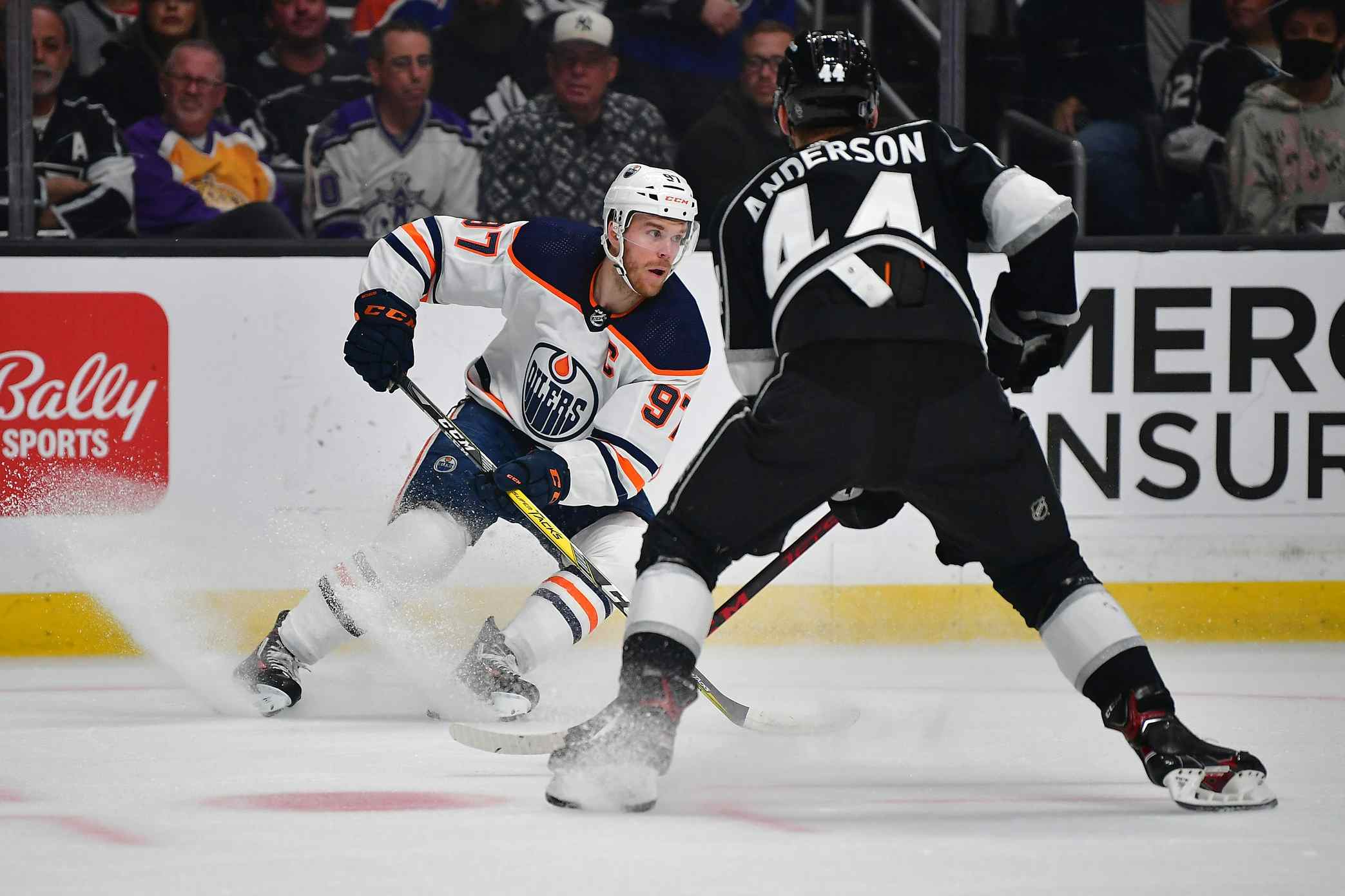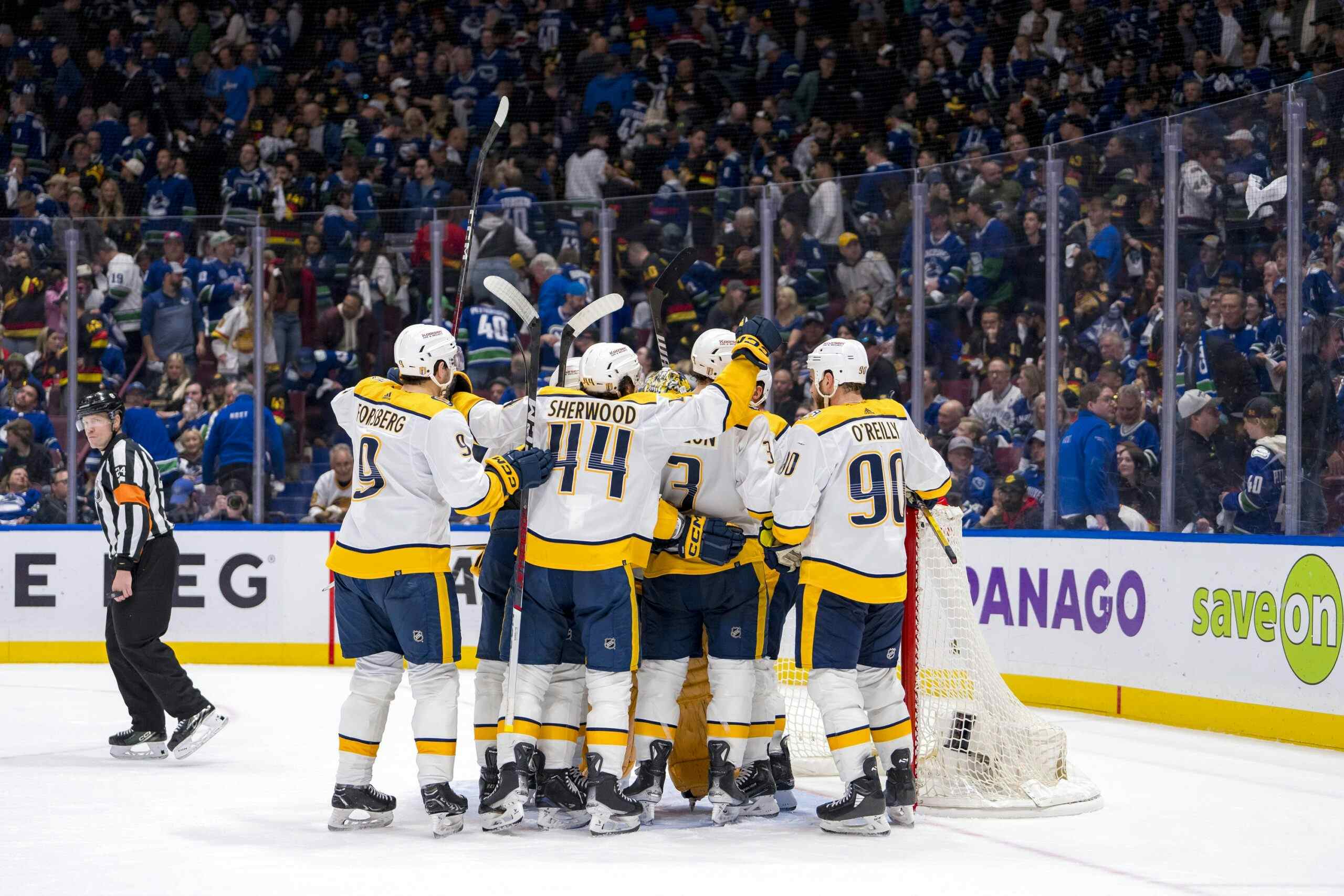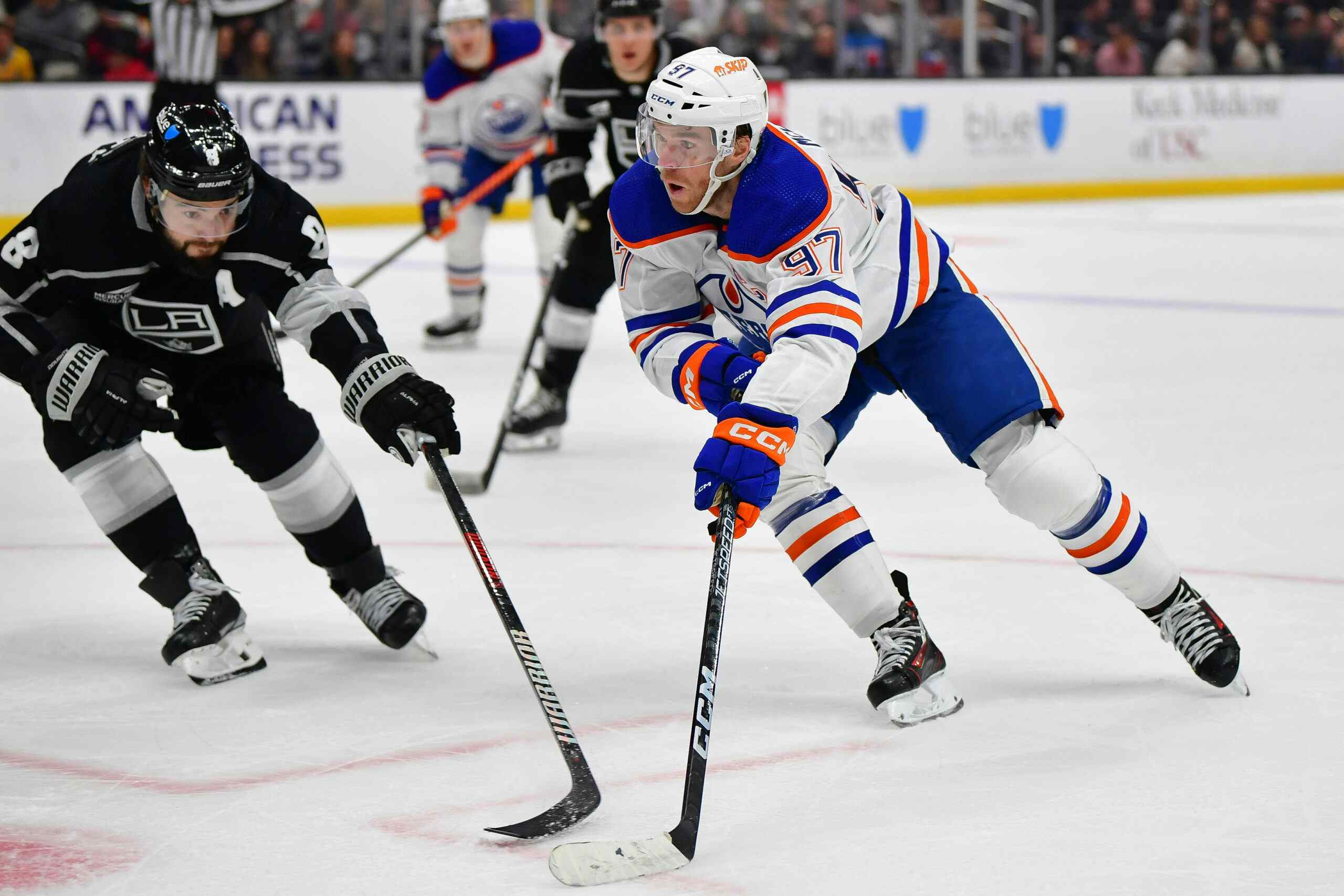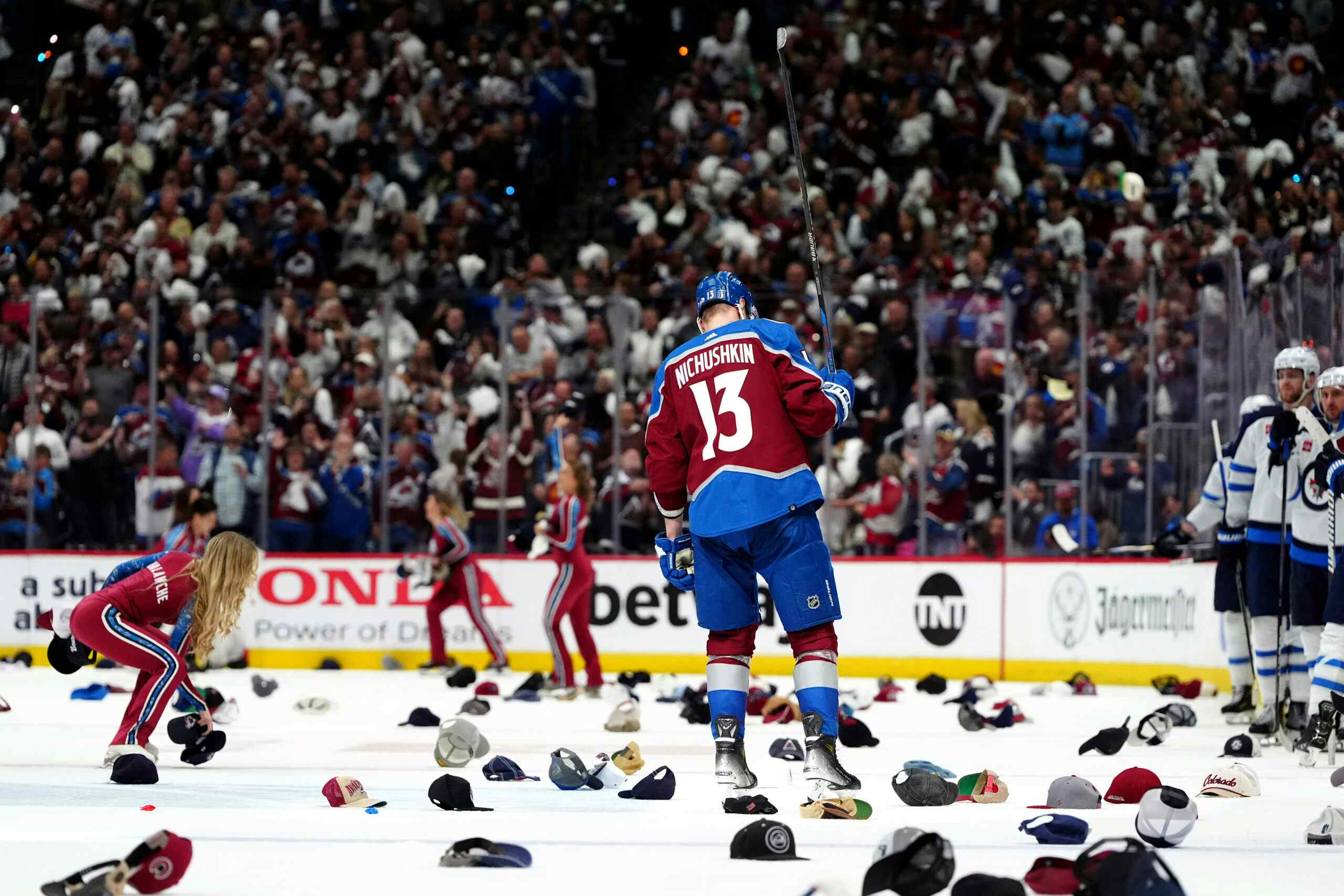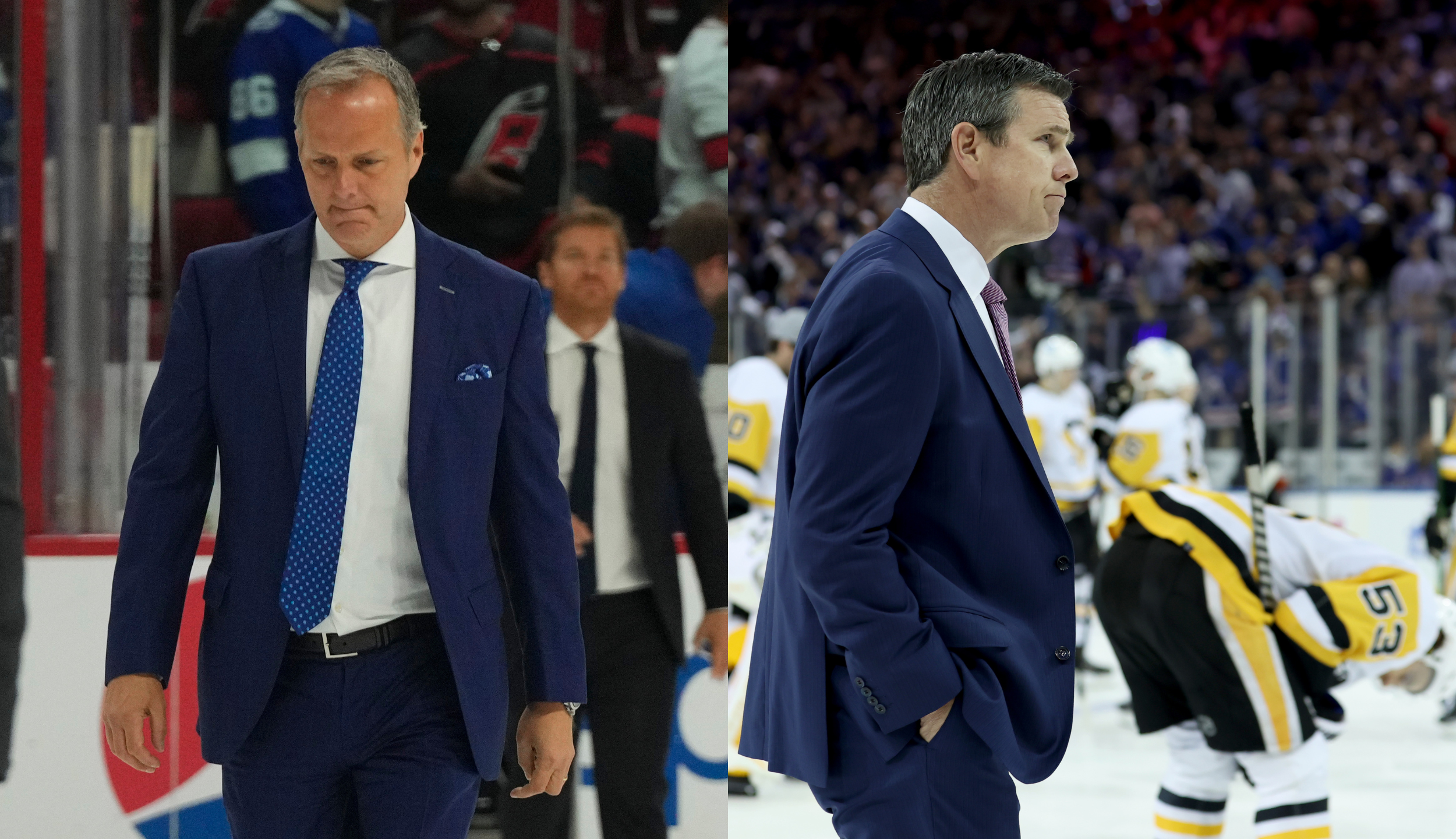Powerplay Improvement a Must for Oilers
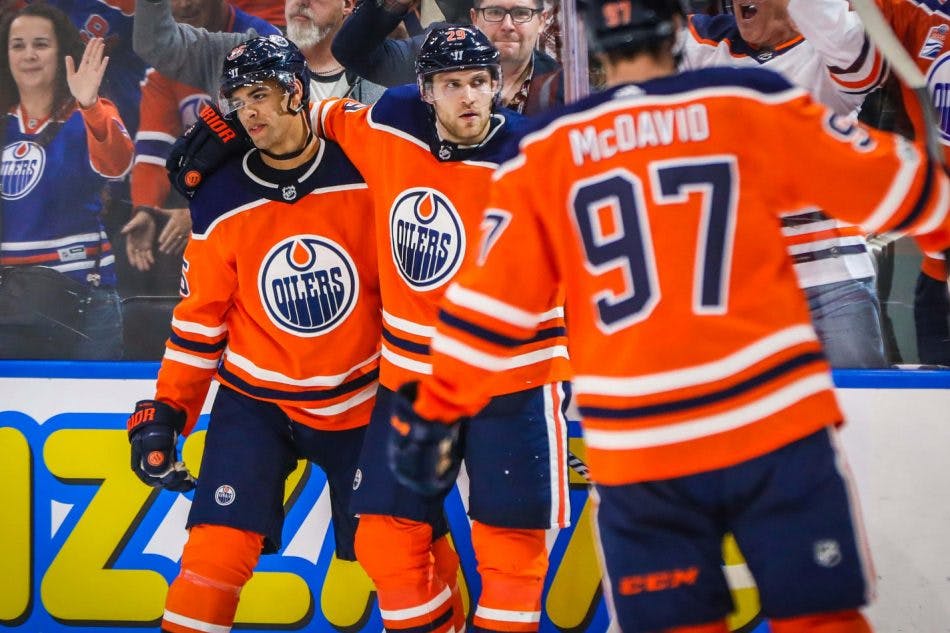
By Jason Gregor
5 years agoCaptain Obvious says the Oilers powerplay must improve this season. Everyone knows it, including the players, but what must happen for their man advantage to resemble the success they achieved in 2017?
We’ll get to that in a moment, but it is interesting to note how much powerplays across the NHL have improved significantly over the past five seasons. In 2014, three teams were 20% or better on the man advantage. In 2018, only four years later, we saw 18 teams at 20.4% or higher. What has changed so significantly in four years to see a jump from three up to 18?
Prior to the 2016/2017 season, the NHL adopted a new rule where the faceoff would automatically be in the offensive zone to start a powerplay. This is a factor, but it might not be as big as you think. If we look at the past four years, we will see three teams in 2014 (20% PP), then it went to seven, eight, eleven, and last season it jumped to 18. When the new rule was implemented in 2017, the jump was only three, but last season we saw a much larger increase in 20% PP efficiency, so I’m hesitant to say offensive zone faceoffs were the main reason.
In 2014, seven teams had more than 900 offensive zone faceoffs, and 12 teams were 50% or better on those draws.
Last season, five teams had more than 900 offensive zone faceoffs, and eleven teams were 50% of better in the O-zone.
Last season, five teams had more than 900 offensive zone faceoffs, and eleven teams were 50% of better in the O-zone.
Most players win more faceoffs in the defensive zone than they do the offensive zone. Look at Patrice Bergeron, one of the best faceoff men in the NHL: in 2014 -2016 he was 57, 61 and 63% on PP faceoffs. In 2017, new rule implemented, he was 60%, and last year he was 53%.
Ryan Getzlaf was 57% in 2014 on PP faceoffs and he was 57% last season. Joe Pavelski, from 2014-2016, averaged 60.8% in PP faceoffs. The past two seasons (new rule) he averaged 60.2% in PP faceoffs.
The zone change hasn’t led to more faceoffs wins, but now when they do win one, they often have the puck in the offensive zone, so I’m sure it is a factor. But it is difficult to say with any certainty how much impact that has had on the increase in PP%. It is some, for sure, but without going over every PP goal in the league, it would difficult to say how much of an impact one single faceoff to start the powerplay is having on the overall numbers.
OTHER CHANGES…

Mar 17, 2018; Sunrise, FL, USA; Edmonton Oilers center Connor McDavid (97) celebrates his goal against the Florida Panthers with defenseman Darnell Nurse (25) in the third period at BB&T Center. Mandatory Credit: Robert Mayer-USA TODAY Sports
So what has changed? I asked TSN analyst Ray Ferraro the differences he has noticed.
“I think there’s a couple of reasons,” he said. “Last year Pittsburgh was I think 26.2% They lead the league; Toronto was next at 25%. I’ve done three Leafs exhibition games and that PP looks like the Harlem Globetrotters. I would say one of the reasons is a greater variety of skilled players available to coaches to work into the powerplay. The skill level of our game, whether the old guys want to believe it or not, is greater than it’s ever been. There are more guys able to more things on the ice than before. That’s the first reason.”
“Number two, is that teams are much more likely to use four forwards, than the traditional three forwards and two D. That gives you another offensive creative player on the ice, and to me that makes a difference,” continued Ferraro.
In 2014, seven of the top-nine PP TOI players were defenceman. PK Subban was second with 382 minutes, Keith Yandle third with 360 minutes and Ryan Suter was ninth with 309 minutes. There were 20 D-men in the top-50 in PP TOI and 37 in the top-100. Compare that to last season.
In 2018 only five D-men were in the top-25 of PP TOI. John Carlson was third (303 minutes), Brent Burns was fifth, John Klingberg seventh, Shane Gostisbehere was 15th and Keith Yandle was 23rd. There was 14 D-men in the top-50 and only 25 in the top-100 of PP TOI.
There was less PP time for teams in 2018 compared to 2014, so it is not surprising that Carlsson’s minutes were less than the top D-men in 2014, however, the amount of D-men in overall PP TOI has changed a lot in just five years.
Ferraro has also noticed other changes.
“Number three, you get to the front of the net, you can stay there. The D can’t beat the crap out of you to move you out of there, so while some refer it to as a tough area, I think it was a hell of a lot tougher when we played to stand there because Derian Hatcher would bounce you on the ground like a bouncy ball, and the ref would yell from the corner, ‘that’s enough’. It was way harder to stand in there. Now you can have a smaller guy stand in front of the net because they don’t have to battle like they used to, and many of those smaller guys are more skilled. They still battle, but it’s not the same as is used to be.
And lastly, the use of the bumper position has really opened up the powerplay. If you have a guy in the middle of the ice who is smart, has good hands and is creative, that bumper position is hell to kill. You can’t squeeze down too low on them, if you do, you open up a one-timer from the point, and the top of the circle guy has moved in ten feet in, the past few seasons, so he has a great shooting lane,” said Ferraro.
Teams have incorporated more bumper play the past few seasons. I’ve also noticed that powerplays are now running more from down low than up high. Less focus on shots from the point men and more plays from below the circles. The Oilers did this in 2017, but last season they reverted back to having too many shots from the point. In 2017 Klefbom had 31 shots on goal in 82 games. Last season he had 51 PP shots in only 66 games.
The Oilers need more shots from their forwards, and I expect we will see that as McDavid is shooting more.
FIVE LEFTIES…

Mar 27, 2018; Edmonton, Alberta, CAN; Edmonton Oilers forward Ryan Nugent-Hopkins (93) celebrates a first period goal assisted by forward Connor McDavid (97), his 100th point of the season at Rogers Place. Mandatory Credit: Perry Nelson-USA TODAY Sports
Using five left shots isn’t normal, and probably not ideal, but it can work as long as the Oilers have McDavid set up on the left boards more often than on the right side. So far in preseason we have seen the Oilers first unit set up more on the left side. “That could be out of habit,” said Ferraro. “It is hard to change habits, but if the Oilers are going to stick with five lefties they have to set McDavid up on the left side.”
We all agree with this. And we should see more of McDavid on the left side in the regular season. Before the Oilers left to Europe I watched their practice and one day they spent a lot of time focusing on the powerplay. Two things stood out.
First, Glen Gulutzan was running it, not MannyViveiross. In the summer when I spoke to McLellan he had mentioned Viveiros would be running the PP with input from Gulutzan, and that made sense since Viveiros was the one who proposed five lefties, and running McDavid on the left wall. On that day Gulutzan was running the PP, so when they return I will watch to see if that has changed.
In practice, they had McDavid running of the right side much more than on the left side. I understand practicing both, but it was slanted heavily from the right side. Of course the right side will still create chances and goals. Milan Lucic’s PP goal yesterday came with McDavid entering on the right side, and Lucic, from the slot, one-touched the pass top-shelf. But that goal was on the rush, not while set up off the boards.
Dustin Nielson also wrote about it this morning.
BUMPER POSITION…
In 2017 the Oilers had a lot of success with Draisaitl in the bumper spot/high slot, but that was with McDavid set up often on the right wall. Draisaitl had a lot of success redirecting pucks from the high slot. Ferraro shared his thoughts on the bumper spot and what that guy has to do while there.
“I think that is a very important position to play. The guy has to have good hands, vision to see when the puck gets to him and he has to know where to go back out with it. A lot of guys get the puck in the bumper spot, and they’ll pass it back to where it came from. Well that doesn’t do anything. It’s nice once in awhile, but you need to have someone with good hockey sense. Say the puck comes from the left side, and he moves it all the way across the ice, so it’s two passes instead the long pass all the way across. The puck can move quickly and penalty killers can’t keep up. Or the pass can come to the wing, and you can go right down to the goal line, and it changes the angles. The defender can’t move his stick as quick as the puck,” explained Ferraro.
But it isn’t just the bumper player who can make a PP better. The others have to know their role and how to use the bumper to their advantage.
“The thing guys have to get their heads around is that the puck is going to go through them a lot of the time,” said Ferraro. “In some cases, if the other four players don’t know how to use the bumper position, you stand there like a traffic cop and the puck gets passed around you, which is of course a colossal waste of time. I’ll give you an example. Before Sam Gagner signed his big deal in Vancouver, he played on the PP in Columbus. It was one of the best PP’s in the league in the first half/three quarters of the season, and Sam played in the middle. So there’s a player as we know, who’s not the quickest guy but he’s smart and has great hands, and he made a living out of that bumper spot.”
“If the Oilers are going to play with five lefties on the PP, they’ve got to set the puck up on the left, top of the circle and that’s got to be McDavid. If they set it up on the other side they kill every one timer. I guess the only one timer you have, is if you get it to the top of the right circle and that’s easily defended. If you have McDavid on the left side, Draisaitl in the middle, and Klefbom on the top, now you have three one-timers in that little triangle. McDavid can come off the wing and shoot the puck on his strong side, because he’s so quick that he can take it into a spot they can’t defend. They (defenders) want to get there but they won’t be able to get there quick enough. If you got five lefties, there is no option; the puck has to be set up on the left side .” continued Ferraro.
WRAP UP…

In 2014 the NHL PP average was 17.9%. In 2018 it was 20.2%. Eighteen teams were 20.4% of better last year, while the Oilers were a woeful 14.8%. Their PP% was the worst in the league and the scored the fewest PP goals with only 31. That was ten less than every team except Columbus (39), St.Louis and Anaheim (38). The top powerplays scored between 58-68 goals.
The Oilers also had the fewest PP chances in the NHL with 210, but having more chances won’t guarantee a better powerplay. The Calgary Flames and Chicago Blackhawks were tied with the fifth most PP opportunities at 269, but they were tied for 28th in PP efficiency at 16%. The Oilers need to be a bit better at drawing penalties. They had 245 opportunities in 2017 (15th in NHL), but dropped to 31st last season.
I’m going to guess the Oilers will have more PP chances this season, because McDavid will draw more penalties. In 2017 he led the NHL with 51 drawn penalties. Last season he was tied for sixth with 35. He was sick, lost 15 pounds and was weaker, during November and December, and he admitted he wasn’t as explosive, so that might have played a small part. But I also think when the Oilers were out of the race from February onward, that some close calls didn’t go his way, or for the team. That will change if the Oilers are in the playoff race.
What is realistic for the Oilers PP this season?
Last year Vegas was 16th in PP opportunities with 248. So let’s just assume the Oilers are average and draw 248 penalties. If they score 50 goals then their PP will be 20.1%, which was the league average last season.
That is 19 more PP goals than they scored last season, but six fewer than in 2017 when the Oilers PP was 22.9%. So to me that is a realistic number.
The Oilers need more PP shots from down low this season, and if they are going to run with five lefties then they must start to set up more from the left side.
Recently by Jason Gregor:
Recent articles from Jason Gregor

